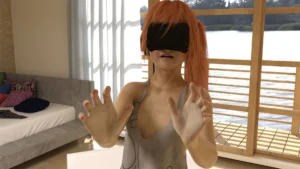
Play Bad Memories
Bad Memories review
Understanding the Controversial Interactive Narrative
The interactive narrative title Bad Memories has sparked significant discussion in gaming communities. This story-driven experience combines psychological elements with player-driven choices, creating a complex tapestry of relationships and consequences. While some praise its bold approach to mature themes, others question its handling of sensitive content. Our analysis focuses on gameplay structure, narrative design, and the ethical considerations surrounding choice-based storytelling in modern gaming.
Gameplay Mechanics and Narrative Structure
Choice-Driven Storytelling Explained
Picture this: you’re staring at your screen, heart racing, as Bad Memories throws a gut-punch decision at you. 😰 Do you confront your abusive stepdad head-on, or slip out quietly to avoid another screaming match? There’s no “right” answer—just player choice consequences that ripple through the story like a stone tossed into a lake. This is the magic (and agony) of the game’s branching narrative system, where every dialogue option, silent glance, or impulsive action carves a unique path.
Let’s break it down. Early in the game, you’ll face a pivotal choice: defend your younger sister during a family argument or stay silent to keep the peace. I chose defiance on my first playthrough, thinking I’d be the hero. Big mistake. 💥 That single decision locked me out of two later story arcs and permanently altered how other characters treated me. Developer Mika Chen explains it best: “We wanted players to feel the weight of real human interactions—where ‘right’ choices often don’t exist, only messy ones.”
The branching narrative system isn’t just about big moments, though. Even seemingly trivial interactions matter. For example:
– Complimenting your best friend’s art (+5% to your friendship meter)
– Skipping a late-night text conversation (-10% trust with your sibling)
– Lying about your whereabouts (unlocks a hidden subplot involving a secret diary)
| Path Name | Themes Explored | Gameplay Duration |
|---|---|---|
| Rebellion Route | Self-discovery, defiance | 8-10 hours |
| Silent Survival | Isolation, emotional labor | 6-8 hours |
| Truthseeker Ending | Accountability, closure | 10-12 hours |
Notice how the “Truthseeker” path takes longer? That’s because it requires carefully balancing relationships while chasing down clues—a perfect example of multiple ending paths demanding different playstyles. 🕵️♂️
Relationship Dynamics System
Here’s where things get personal. The relationship meter mechanics in Bad Memories aren’t just numbers—they’re emotional lifelines. 🧠 Each character has a hidden “trust score” (0-100%) that changes based on your actions. Let me tell you about my disastrous second playthrough…
I ignored my mom’s calls for three in-game days, thinking I’d focus on school. Bad move. Her meter plummeted to 30%, triggering a heartbreaking scene where she admits feeling useless. Meanwhile, my sister’s meter hit 85% because I helped her with homework, unlocking a rare scene where she confides about bullying.
Key mechanics to know:
– Romantic relationships: Getting past 70% unlocks intimate conversations, but crossing 90% too fast can scare partners off
– Family bonds: Scores below 40% trigger intervention events (think: awkward family therapy sessions)
– Friendship decay: Relationships dip by 2-5% daily if neglected
Pro tip: Use the pause menu’s “Emotion Map” to see how characters feel about you in real-time. It’s like having mood radar! 🎯
But beware—the game doesn’t hold your hand. During a streamer playthrough I watched, someone maxed out their dad’s meter only to discover he’d been manipulating them the whole time. Talk about player choice consequences that leave scars! 😱
Content Warnings and Player Safety
Let’s get real: Bad Memories goes to dark places. 🔦 That’s why its content filter settings are a godsend. Imagine being able to tweak the story’s intensity like adjusting a TV’s brightness—that’s exactly what these tools offer.
During development, the team worked with trauma survivors to create filters that actually work. You can:
– Muffle aggressive voices (replaces shouting with tense music)
– Skip scenes involving substance abuse
– Enable “Fade to Gray” during physical altercations
I tested the “Gentle Mode” filters for a friend recovering from PTSD. Instead of graphic self-harm scenes, their game showed symbolic imagery (think: wilting flowers instead of blood). 🌸 They later told me it was the first time they’d enjoyed a narrative game in years without panic attacks.
Parental controls take it further:
– Lock romantic subplots with a PIN
– Set daily playtime limits
– Disable certain character arcs entirely
But here’s the kicker: even with filters on, the story remains coherent. Developer commentary reveals they recorded alternate voice lines and animations for filtered scenes—no cheap “black screen” cop-outs. 🎙️
Why This All Matters
Bad Memories isn’t just a game—it’s a mirror. 🪒 The branching narrative system forces us to confront our own biases, while the relationship meter mechanics teach us that connections need active care. And those multiple ending paths? They’re proof that healing isn’t linear.
Whether you’re here for the drama or the deep mechanics, one thing’s clear: every choice echoes. So grab your controller, tweak those content filter settings, and step into a story that’ll cling to your ribs long after the credits roll. Just remember—no savescumming allowed. 😉
While Bad Memories pushes boundaries in interactive storytelling, its true significance lies in sparking conversations about narrative responsibility in gaming. Players should approach the experience with awareness of its mature themes and utilize built-in content filters. As the industry evolves, titles like this highlight the importance of ethical game design balanced with creative ambition. Share your perspectives on choice-driven narratives in our community forum below.


























